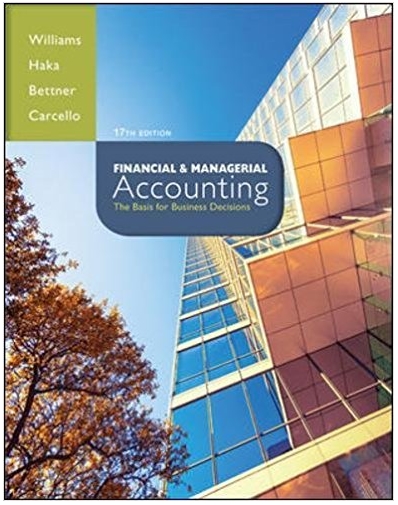Drone Corp. is a company located in Barrington Il it is owned by Jennifer Swanson who inherited the business from her family. The companys
Drone Corp. is a company located in Barrington Il – it is owned by Jennifer Swanson who inherited the business from her family. The company’s original business was to manufacture and sell remote control toy aircraft and they have been in business for many years. In recent years they developed a drone aircraft and a variety of related specialty items, all of which have been reasonably successful. Kara Mielke is a recent NEIU graduate who was hired to their finance department.
One of the company’s major income-producing lines of business involves the Buzzer, an early entry to the drone market. They have one model on the market and it has been very successful. The Buzzer is distinguished from the competition because it comes in a variety of different colors and is preprogrammed to work with some add-on features that make it attractive to customers. But the rate of change in the industry is fast and some of the competitor products that are coming to market seem to provide the customer with choices and features which will make those competitive products more attractive than Drone’s Buzzer.
Jennifer expended $750,000 to develop a prototype which would upgrade the Buzzer so that it would stay a step ahead of the competitors. The company then spent an additional $200,000 in a feasibility study to determine the expected revenue figures for the upgraded Buzzer.
The company can manufacture the new upgraded Buzzer for $205 in variable costs. Their fixed costs for the operation are assessed to be approximately $5.1 million annually. The estimated unit sales are 64,000, 106,000, 87,000, 78,000, and 54,000 annually for the next five years, respectively. The unit price of the new upgraded Buzzer will be $485. The requisite equipment can be acquired for $34.5 million and it will be depreciated on a seven-year MACRS schedule. It is believed that the value of the equipment in five years will be $5.5 million.
Net working capital for the upgraded Buzzer will be 20% of sales and will occur with the timing of the cash flows for the respective year (that is, no working capital investment in the initial outlay). Changes in working capital will therefore first occur in year 1 with the first year’s sales. The firm Has a 35% corporate tax rate and a required return of 12%.
Note: In the interests of fairness, here is the deprecation amount (in bold italics) that you should use in solving.
Good question! I'll give you the depreciation amounts for this case...
4,930,050
8,449,050
6,034,050
4,309,050
3,080,850
Yes, you'd use the first 5 years MACRS for the case spreadsheet. Now, why does the 7-year schedule run for 8 years? Great trivia question! It's all about using a half-year convention. Meaning that the in-service date for the asset would get that total of 3,080,850 regardless of whether the asset goes in-service on Jan 1 or Dec 31.
Their questions are:
What is the payback period for the project?
What is the profitability index for the project?
What is the IRR for the project?
What is the NPV of the project?
Should the company go forward with the project?
If there is erosion in their existing product due to the introduction of the upgrade, what is the impact on your analysis?
Step by Step Solution
3.53 Rating (163 Votes )
There are 3 Steps involved in it
Step: 1
Answer1 Payback Period The payback period is the amount of time it takes for a company to recover the initial investment of a project To calculate the payback period one must divide the initial invest...
See step-by-step solutions with expert insights and AI powered tools for academic success
Step: 2

Step: 3

Ace Your Homework with AI
Get the answers you need in no time with our AI-driven, step-by-step assistance
Get Started


